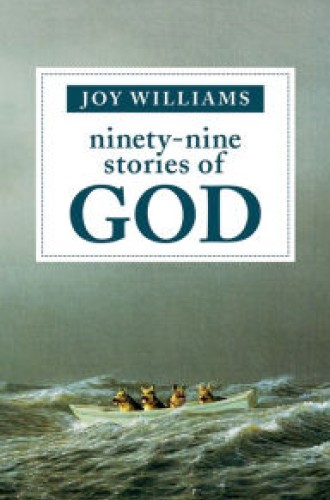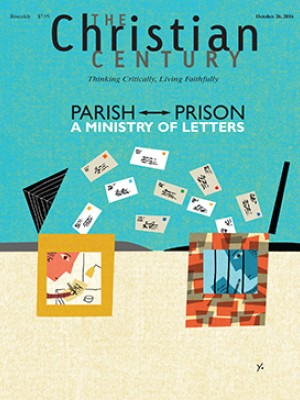"The Lord” first appears in these stories in no. 10, titled “Wet.” He is drinking a glass of water in a “white building on a vast wasteland,” and the water tastes terrible. He asks the engineers who are working in the building, “What have you done to my water . . . My living water?” The engineers answer, “We thought that was just a metaphor.” End of story. In all it contains less than 100 words, but it manages to illuminate the Christian tradition and then send it through a prism. The light refracted on the other side has changed it. This story is a question, a lament, a commentary, and a joke all at once.
The Lord doesn’t appear in every story in the book, but when he does he is more mystified than mysterious, more bewildered than bewildering. He reports having been to a hot dog eating contest; he practices some lines as if he were a stand-up comic; he stands in line for a shingles shot. He is everywhere and nowhere, and when he does appear, nothing gets settled or better understood. But it does get a little funnier.
Read our latest issue or browse back issues.
The book feels like a series of puzzles, Zen koans, or Hasidic tales. In the late 18th century, Rabbi Nachman of Bratslav despaired of ever teaching his people the right path. He had tried to teach them through study and through arguments. But then he recognized that what the people really needed were stories. “You wake a person up by means of tales,” he said. And stories work best if they are told “in the midst of years,” as a part of the fabric of everyday life.
The purpose of Williams’s stories seems to be to wake up readers in the midst of everyday life. If narrative expectations can sometimes lull a reader to sleep, these stories are designed to create a surprise, a laugh, or a jolt. They act as catalysts that allow us to see the world around us in a new way.
“There was a preacher at her parish that she simply loathed,” begins no. 26, “Satisfaction.” The unnamed character does not get over her dislike of this preacher, as you might expect from a morality tale. She doesn’t suddenly see something in him that she hadn’t before; they don’t have an unanticipated encounter. Instead, the commentary is slier. The woman becomes attached to her dislike of the preacher, exaggerates it, and turns it into a crutch that gives her, as the title suggests, satisfaction. This lack of change so defies narrative expectations that I felt I had to start the story over from the beginning to see if I had missed something. On a second reading, my own dislike of the central character, and my identification with her, intensified. By the third reading, I felt that she was me and I was her, and I was wondering where in my life I also attach myself to an intense dislike from which I derive pleasure.
The sense of disruption also comes from form. The book almost feels like it should be read backward. If you start with the back matter, you learn that the book is a “Book of Common Prayer as seen through a looking glass”—perhaps as good a description as one can give. There’s something prayerlike about stories that send out beams into the universe in search of an encounter with the Supreme Being. There’s certainly something common about not getting a satisfying response.
Each story’s title is printed at the end of the story. Sometimes I would read the titles first, feeling like I was breaking a rule. Sometimes I would read them at the end. More often, I would stop in the middle of the very short story and jump to the title, looking for a clue as to the story’s meaning. Usually the title functions as a dry-humored joke, a punch line. Sometimes it is another puzzle. In very rare cases does it explain anything.
The daughter of a Congregationalist minister, Williams is steeped in the tradition from Abraham to Borges, from Jesus to Dostoevsky. Kafka makes frequent appearances, as does Bonhoeffer. Story no. 64, titled “I Pity the Fool,” is solely a quote of Bonhoeffer’s words from prison, perhaps offered as an excuse for inadequate conduct of the Lord: “The God who is with us is the God who forsakes us. Before God and with God, we live without God.”
What is the cumulative effect of these stories “of God”? One titled “Fog” has a child and a lion walking through the fog and talking about death. The lion tells the child that he knows a lot about death, though he himself has never died. Whenever he has been close to death, he has felt filled with a “blessed, utterly unknown presence.” “Was it . . . consoling?” the child asks.
“Yes,” the lion says. “An inexplicable consoling irony filled my heart.” These tales, whether telling of random acts of violence or nervous kindness, are filled with an inexplicable consoling irony. At least you know your bafflement is shared, even by the Lord.







